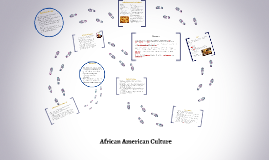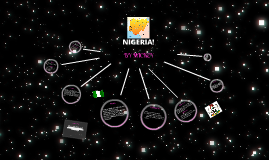African Imperalism: Nigeria
Transcript: 3 A C Description of Government Business Reports Nigeria is a federal republic with executive power exercised by the president. The president is the head of state, the head of government, and the head of a multi-party system. Nigerian politics takes place within a framework of a federal, presidential representative democratic republic in which executive power is exercised by the government. Nigeria's major ethics groups or religious affiliates like the Hasa, and Muslim, Yoruba <islam< and christianity. Native culture Sales Model 1 Nigeria has an artistic tradition that dates back thousands of years. While much of the country's early art had a religious or spiritual significance, many of the traditional arts and crafts evolved over time to include practical and decorative items. Many of the local arts and crafts are regional, but most large markets in the major cities sell items from all over the country. Archaeologists in Nigeria have found a tradition of sculpture that dates to at least 500 B.C. Statues and figurines made of ceramic, bronze, terra cotta and brass have been found in Nigeria. Art 2 The music of Nigeria includes many kinds of folk and popular music, some of which are known worldwide. Styles of folk music are related to the multitudes of ethnic groups in the country, each with their own techniques, instruments, and songs. Little is known about the country's music history prior to European contact, although bronze carvings dating back to the 16th and 17th centuries have been found depicting musicians and their instruments. The largest ethnic groups are the Igbo, Hausa and Yoruba. Traditional music from Nigeria and throughout Africa is almost always functional; in other words, it is performed to mark a ritual such as a wedding or funeral and not to achieve artistic goals. Although some Nigerians, especially children and the elderly, play instruments for their own amusement, solo performance is otherwise rare Music/Dance 3 Nigerian singer/songwriter Ayodeji Ibrahim Balogun began his career in music when he was just 11 years old. His first record, Lil Prinz, was recorded in 2001 in collaboration with Glorious Five, a group with Balogun and his friends from church. In 2006, he started pursuing music full-time, at first collaborating with various Nigerian pop acts that included OJB Jezreel, Naeto C, and Banky W. By 2011 he was ready to record his debut studio album as a solo artist; Superstar was released via Empire Mates Entertainment to great critical and public acclaim across Africa, propelling him to stardom in his home country. After multiple delays and label disagreements, Balogun released his sophomore album, Ayo, in 2014. Biography of an important person The job of taking young people through the path of this generative process was left in the hands of different secret societies. The events were not only dramatic but also frenzied. On the day of initiation, the male candidates were taken through training on how to behave in adult life and tenets of strength and confidence. As the initiation right drew to a close, the excitement was also heightened. The youths went into series of wild dance movement aimed at inducing delectation. At the crescendo of their rapture, circumcision took place. Beliefs/rites of passage/ Holidays How It Works Environment Quick Overview Many of Nigeria's environmental problems are those typical of developing states. Excessive cultivation has resulted in loss of soil fertility. Increased cutting of timber has made inroads into forest resources, exceeding replantings. By 1985, deforestation claimed 1,544 square miles of the nation's forest land. Between 1983 and 1993 alone, Nigeria lost 20% of its forest and woodland areas. Oil spills, the burning of toxic wastes, and urban air pollution are problems in more developed areas. In the early 1990s, Nigeria was among the 50 nations with the world's highest levels of carbon dioxide emissions, which totaled 96.5 million metric tons, a per capita level of 0.84 metric tons. Water pollution is also a problem due to improper handling of sewage. Social Issues Global Issues some of the contemporary social problems happening now in the Nigerian society include poverty, examination malpractice, juvenile delinquency, drug abuse, kidnapping, cultism, crime proned films and movies among others. Contact Info Martin, Liam. “Wizkid Biography & History.” AllMusic, www.allmusic.com/artist/wizkid-mn0003081520/biography. Potter, Heather. “Information About Traditional Art of Nigeria.” USA Today, Gannett Satellite Information Network, 17 Apr. 2018, traveltips.usatoday.com/information-traditional-art-nigeria-39986.html. “Nigeria - Environment.” Encyclopedia of the Nations, www.nationsencyclopedia.com/Africa/Nigeria-ENVIRONMENT.html. Works Cited

















